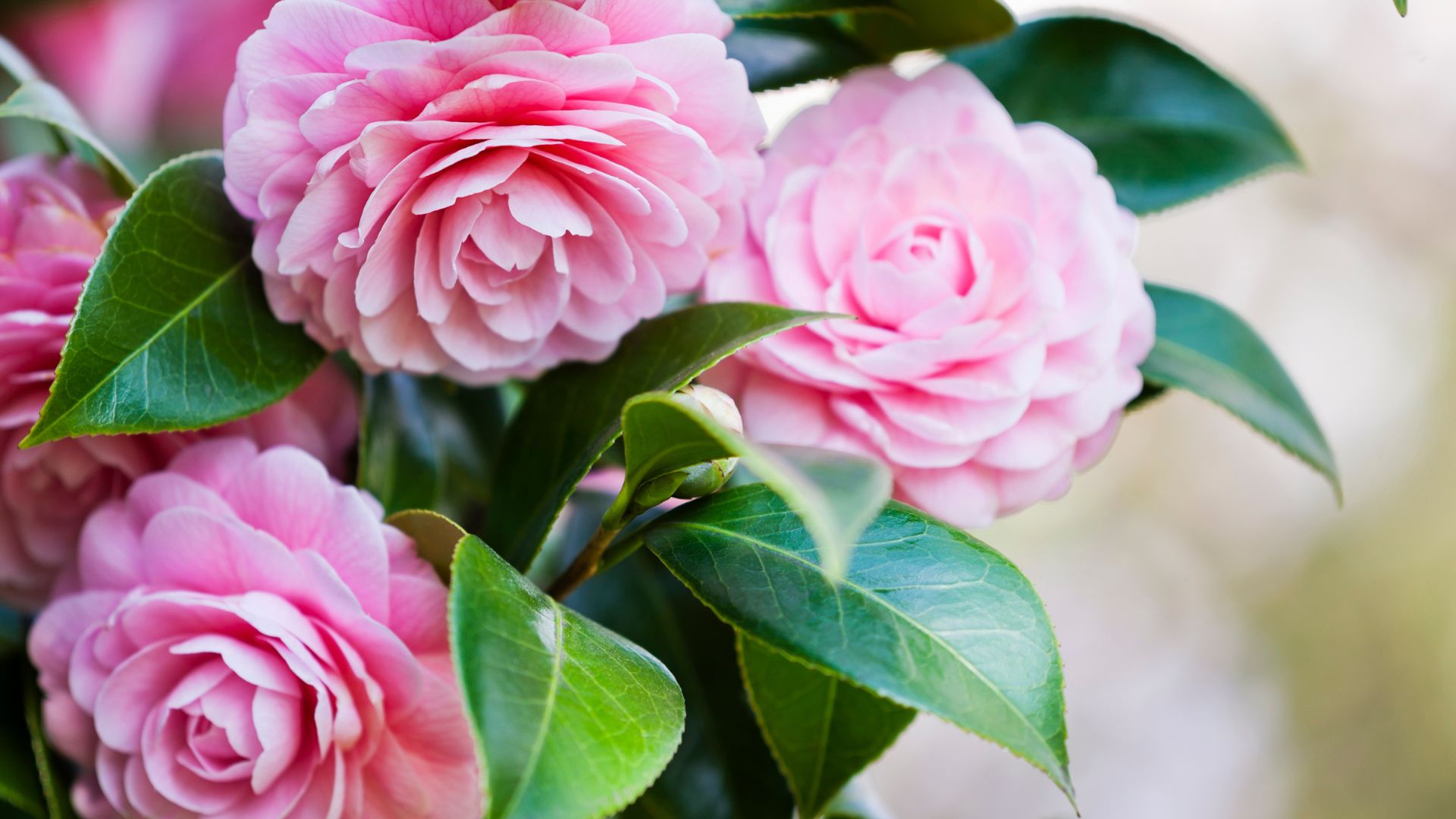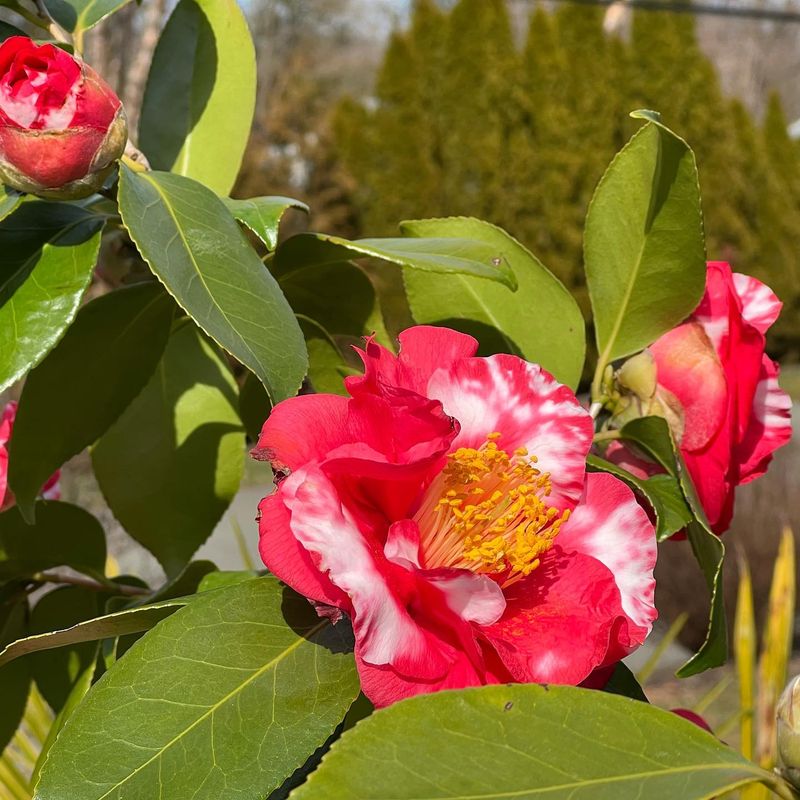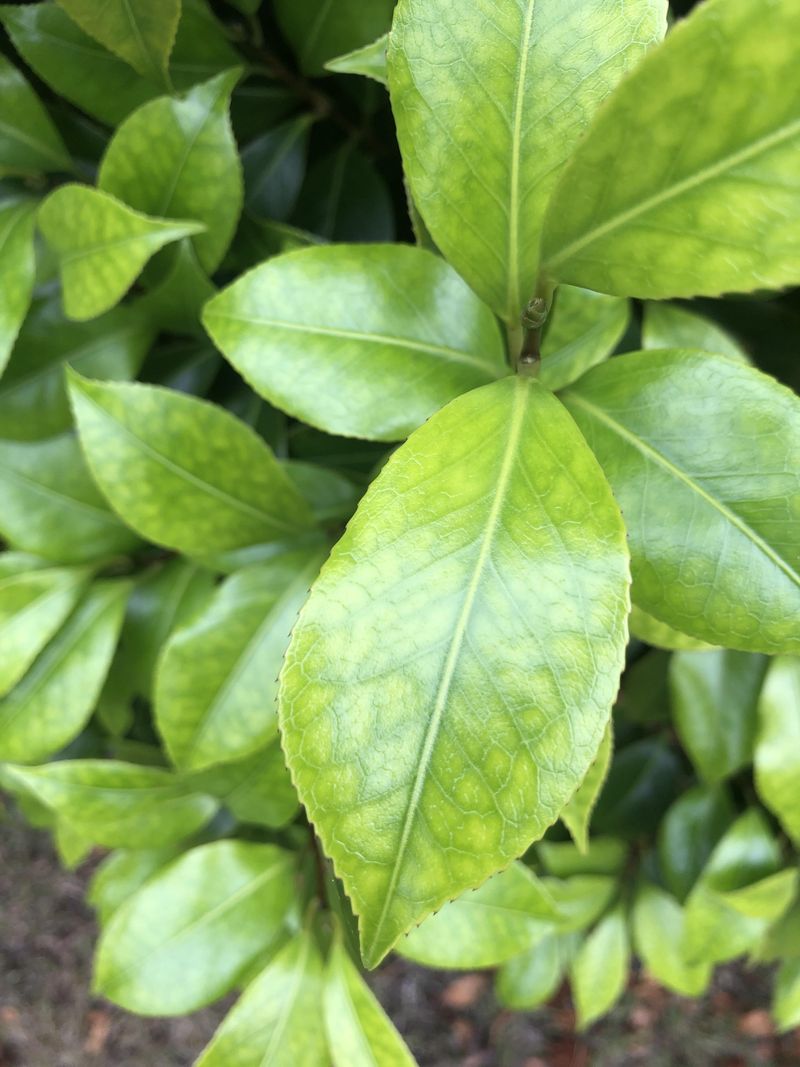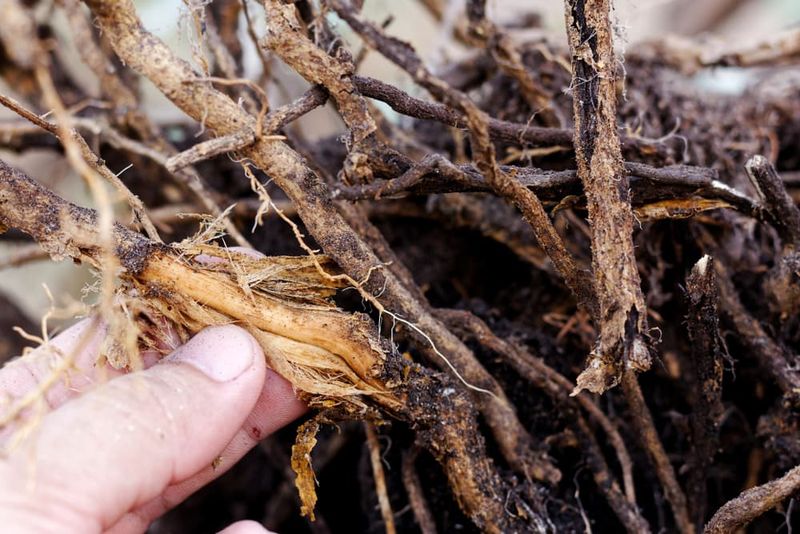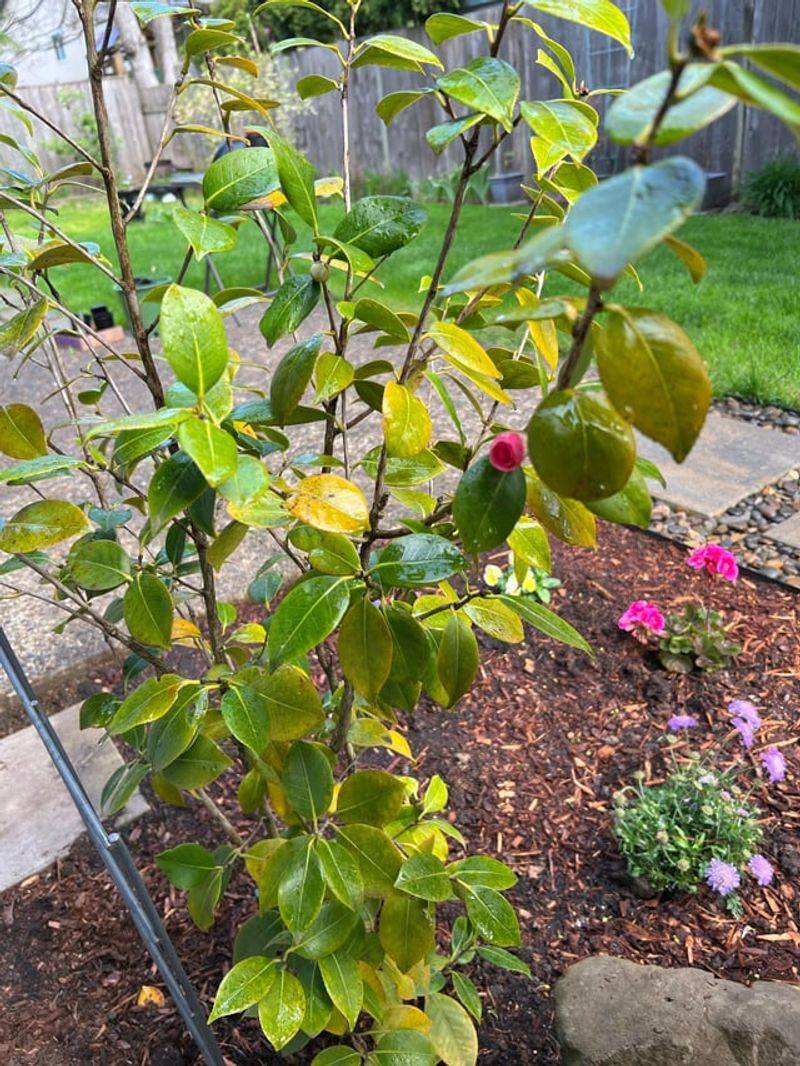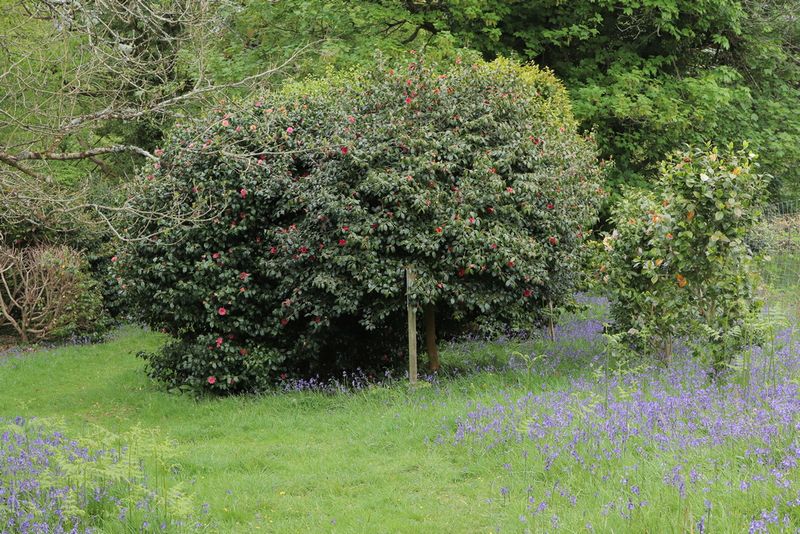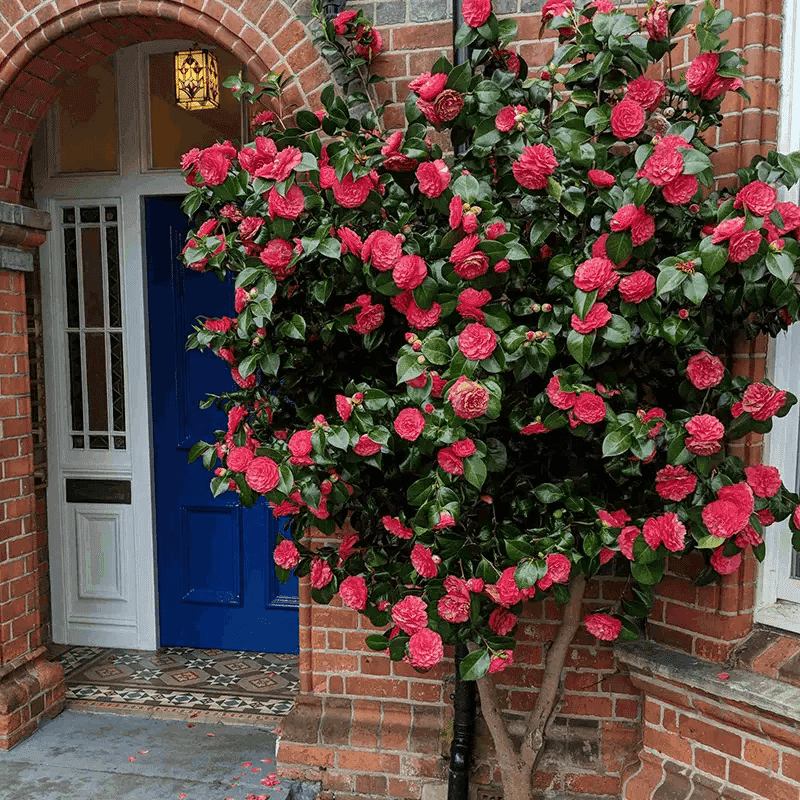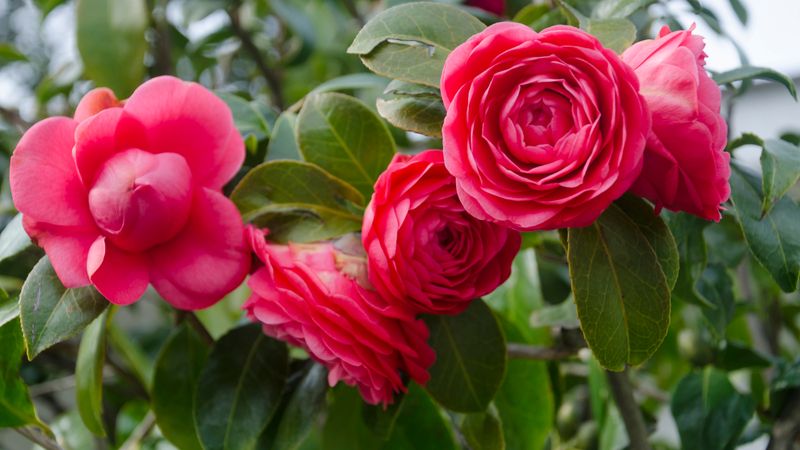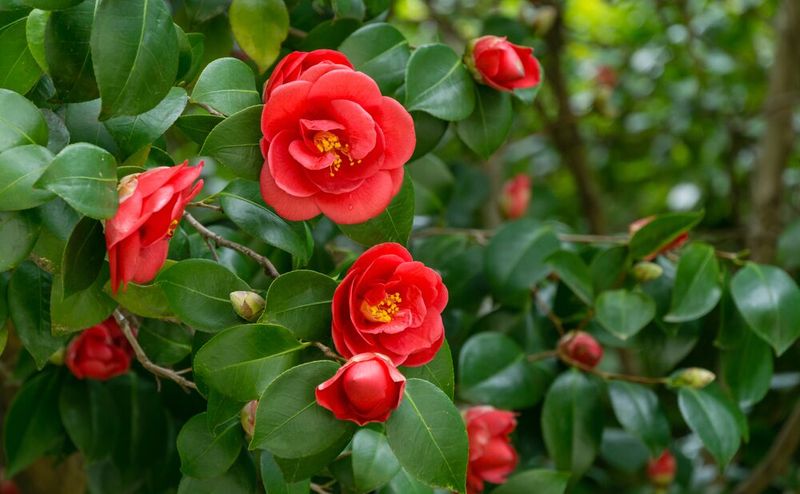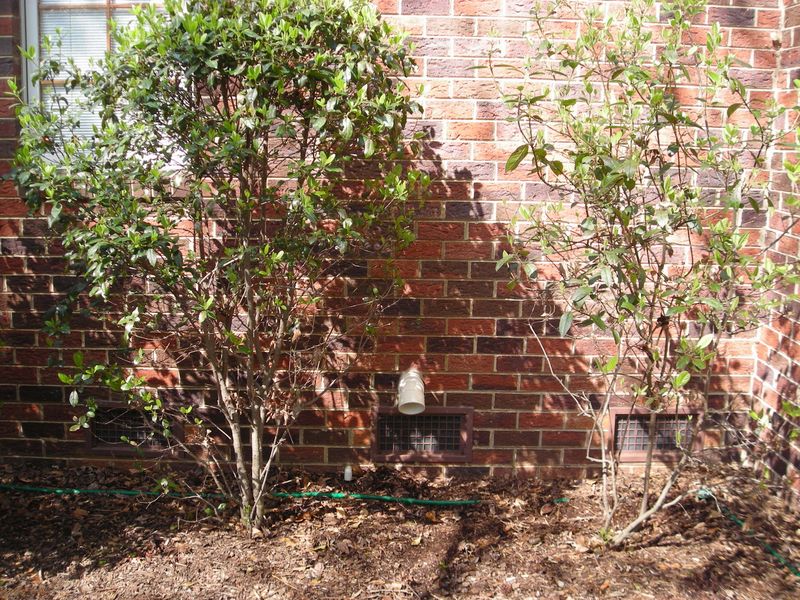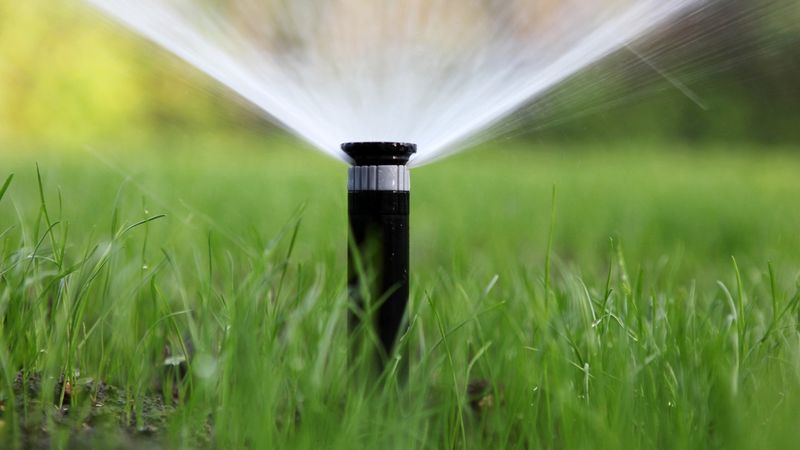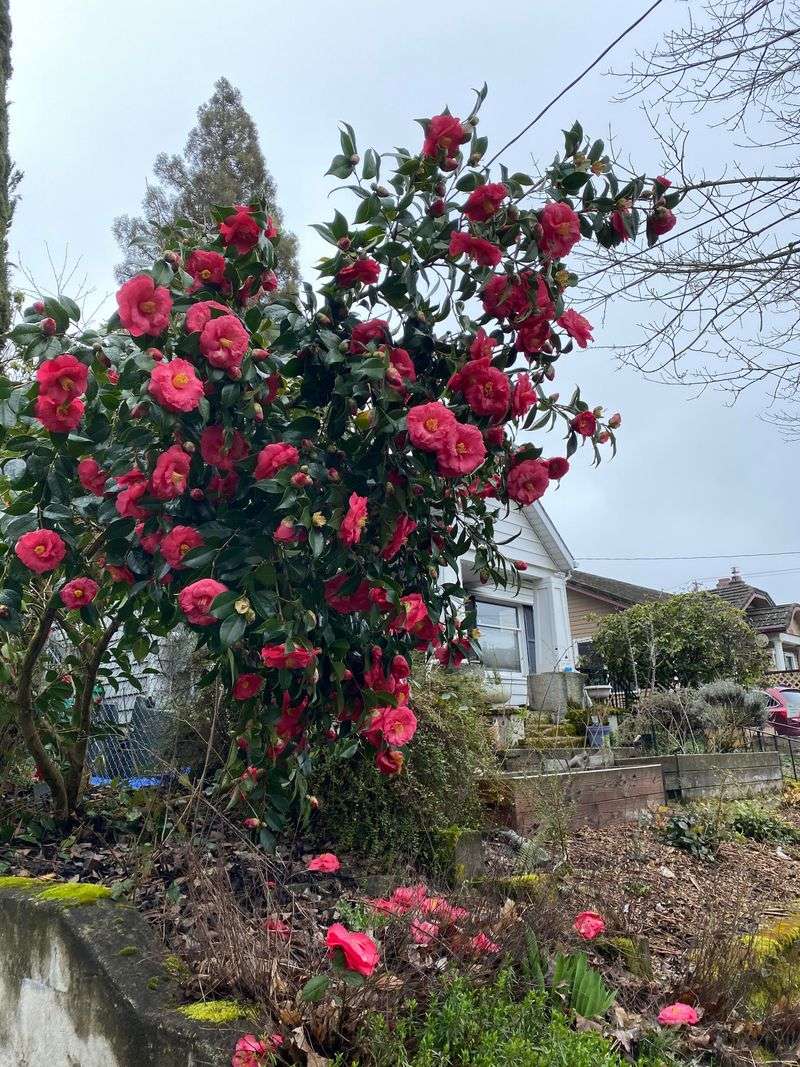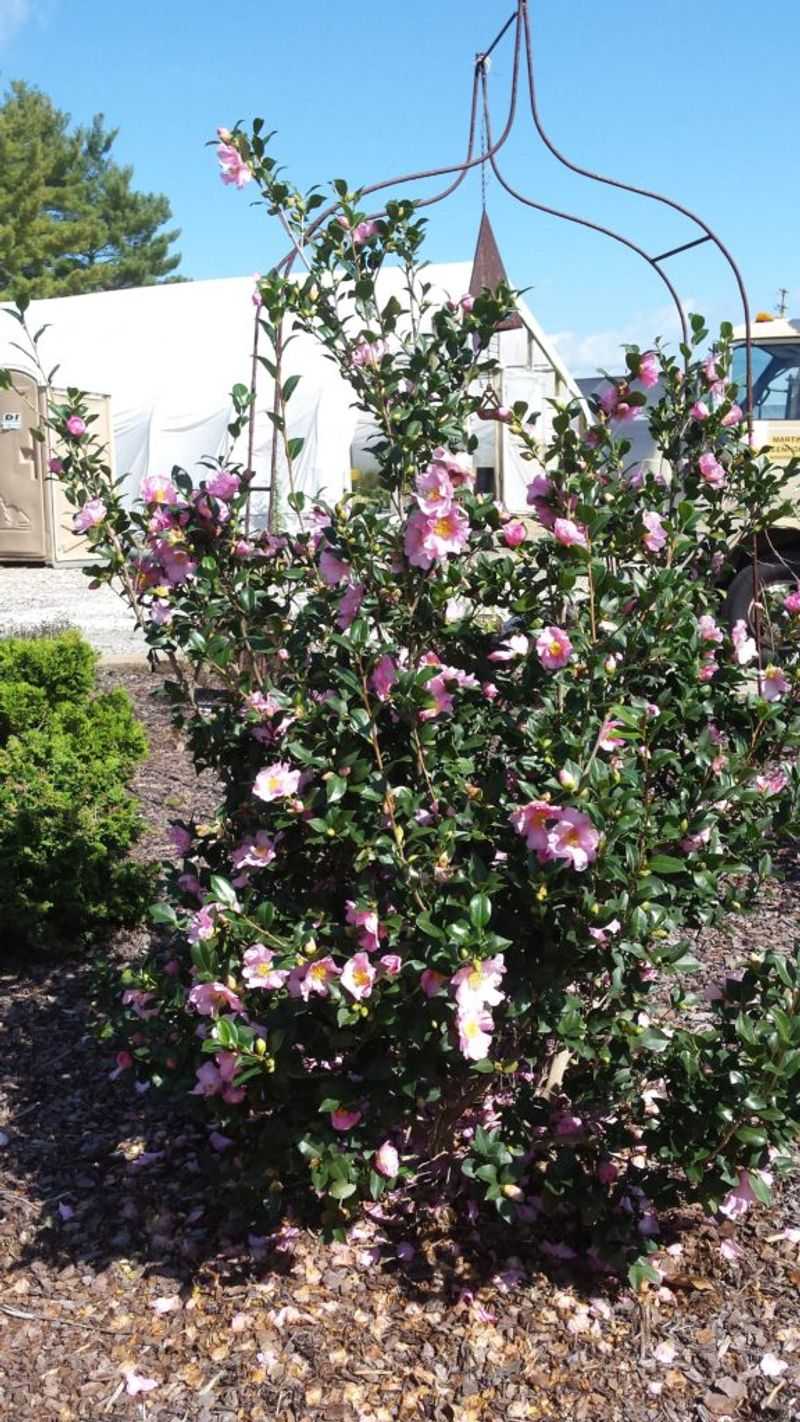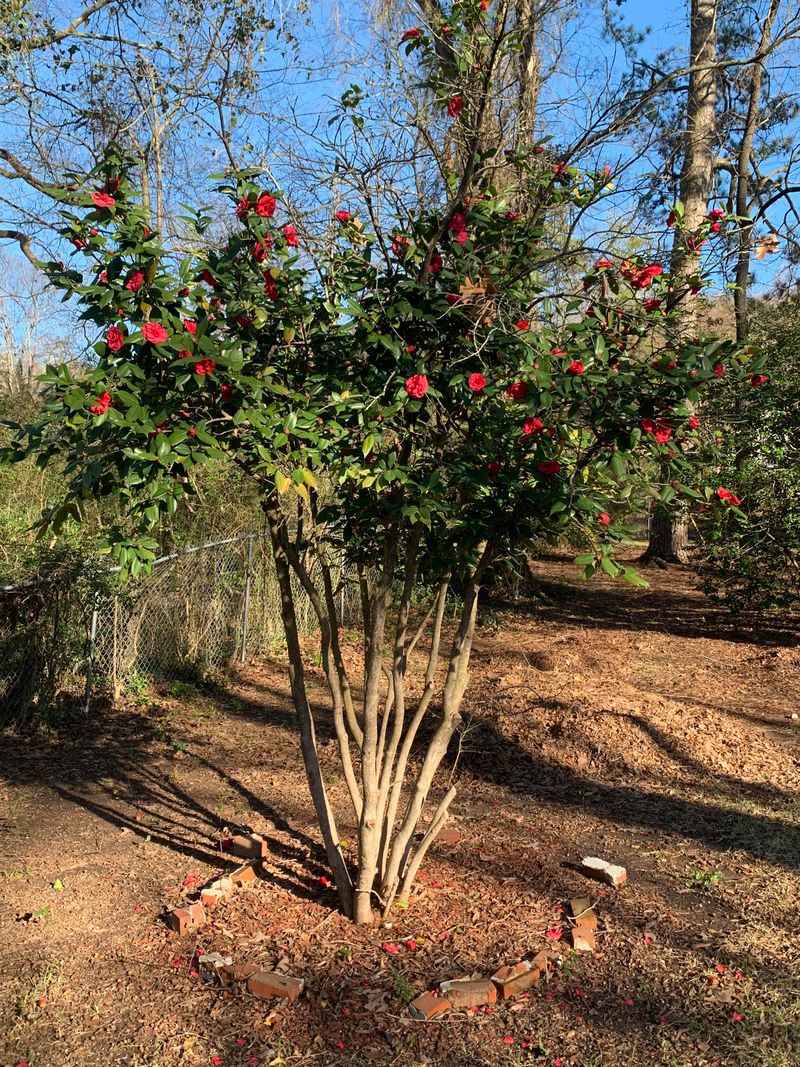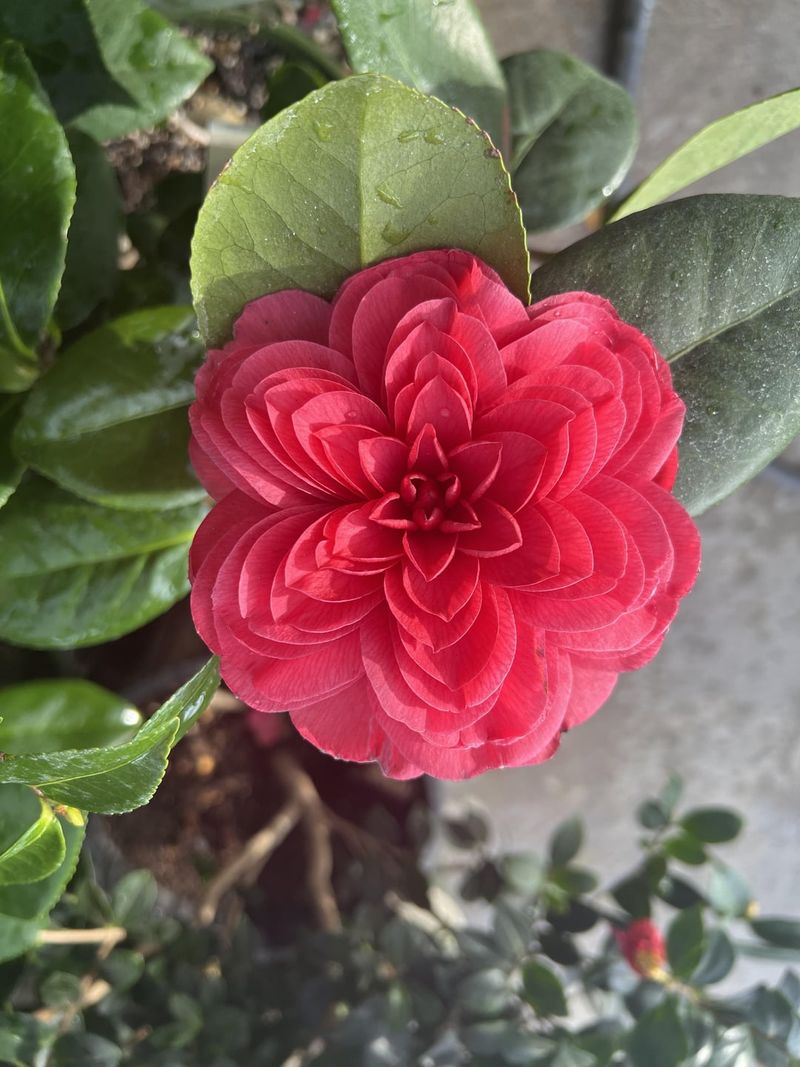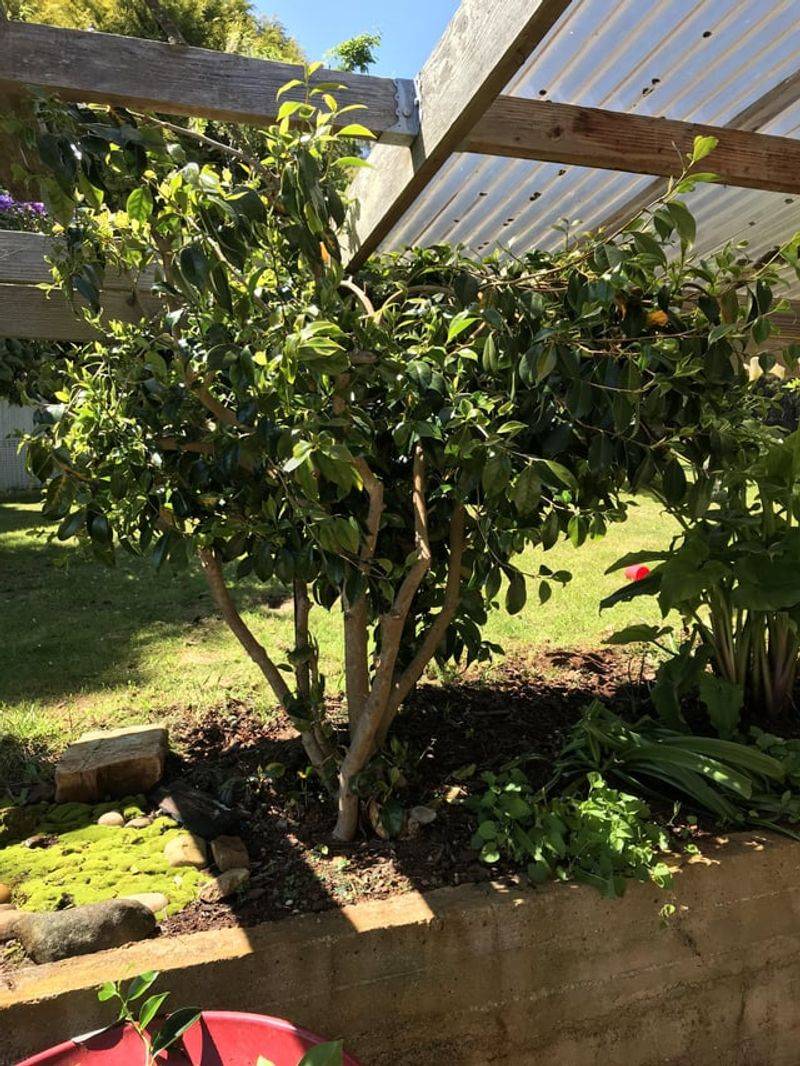Camellias are stunning flowering shrubs that can transform your garden with their glossy leaves and gorgeous blooms. I’ve learned through years of trial and error that these beauties have some pretty specific preferences about where they’ll thrive.
For me, planting one too close to my west-facing wall never worked out – the poor thing fried in the afternoon heat despite regular watering. Many gardeners assume camellias are fussy plants, but they’re actually quite resilient when given the right conditions.
Understanding what makes camellias happy saves you from the disappointment of watching these elegant plants struggle. With proper placement, these long-lived shrubs will reward you with decades of spectacular flowers that brighten up even the dreariest winter days.
1. Direct Afternoon Sun
The scorching afternoon rays spell disaster for camellias. I once planted a Japanese camellia in a spot that got blasted with sun from 1-5pm, and watched its leaves turn yellow and crisp within weeks.
Camellias evolved as understory plants in forests, where they enjoyed dappled light filtered through tree canopies. Morning sun is generally fine, but they need protection when the day heats up.
For best results, choose an east-facing location that provides bright morning light followed by cooling afternoon shade. Your camellias will thank you with abundant blooms and healthy, glossy foliage.
2. Alkaline Soil Areas
Nothing makes camellias more miserable than alkaline soil. These acid-loving plants develop yellowing leaves (chlorosis) when forced to grow in soil with a pH above 6.5, as they can’t access vital nutrients like iron.
My neighbor’s camellia struggled for years until a soil test revealed a pH of 7.2. After adding sulfur and peat moss to acidify the soil, her plant transformed within a season.
Before planting, test your soil’s pH. Aim for 5.5-6.5 for happy camellias. In naturally alkaline areas, consider growing them in large containers with acidic potting mix instead of fighting a constant pH battle.
3. Poorly Drained Locations
Soggy feet lead to camellia death. These shrubs hate standing water and will develop root rot when planted in areas where water pools after rain. My first camellia died this way after I naively planted it in a low spot in my yard.
While camellias need consistent moisture, their roots must never sit in waterlogged soil. Look for signs of poor drainage: standing water, moss growth, or compacted soil that stays wet for days after rain.
Choose slightly elevated locations or improve drainage by adding organic matter and creating raised beds. In problem areas, consider installing French drains before planting these moisture-sensitive beauties.
4. Exposed Windy Sites
Strong winds spell trouble for camellias. The corner of my garden that catches winter gusts hosted a struggling camellia for years—its flowers would brown before fully opening, and new growth often got damaged.
Wind desiccates camellia foliage and damages delicate blooms. These woodland natives evolved in protected forest settings where they were sheltered from harsh elements. The large leaf surface area makes them particularly vulnerable to moisture loss in windy conditions.
Plant camellias near windbreaks like walls, fences, or larger evergreen shrubs. My relocated camellia now flourishes next to a holly hedge that buffers the prevailing winds.
5. Deep Shade Locations
Contrary to popular belief, camellias aren’t shade lovers—they’re shade tolerators. I learned this lesson with a sasanqua camellia planted under a dense maple that produced only a handful of blooms each year.
Too much shade leads to sparse flowering and leggy growth as plants stretch toward light sources. Camellias need some brightness to initiate flower buds and maintain compact growth habits. The perfect spot offers filtered light or dappled shade.
If your yard is heavily shaded, consider the north side of buildings where camellias receive bright, indirect light without harsh sun. Or select areas under high-branched trees that allow light to filter through.
6. Near Concrete Foundations
Planting camellias against concrete foundations often leads to disappointment. Concrete leaches lime, gradually raising soil pH and creating alkaline conditions that camellias hate. My grandmother’s prized camellia developed yellowing leaves after years near her home’s foundation.
Additionally, these areas often suffer from rain shadows—spots where overhangs block rainfall from reaching plants. Foundation plantings frequently experience temperature extremes as walls radiate heat in summer and create cold pockets in winter.
Keep camellias at least 3-4 feet from concrete structures. If you must plant near foundations, create a barrier using acidic mulch and regularly test soil pH to catch problems early.
7. Frost Pockets And Low Areas
Cold air sinks and collects in low spots, creating frost pockets that can damage tender camellia buds and flowers. I’ve watched camellia blooms turn brown overnight when planted in a dip in my landscape where frigid air settles.
Early-blooming varieties are especially vulnerable since their flowers open during late winter when temperature fluctuations are common. These low areas often stay colder longer than surrounding terrain, increasing the risk of frost damage.
Plant camellias on slight slopes or elevated areas where cold air can drain away. Mid-slope positions typically offer the best protection from both damaging frosts and drying winds while still providing good soil drainage.
8. Crowded Root Zones
Camellias don’t play well with aggressive root competitors. My attempt to grow a camellia near a maple tree turned into a constant battle the shrub couldn’t win. The tree’s extensive root system depleted moisture and nutrients, leaving the camellia perpetually stressed.
Shallow-rooted camellias struggle when forced to compete with trees and shrubs that have invasive root systems. Common culprits include maples, willows, poplars, and certain types of bamboo that create dense root mats.
Give camellias their own space, ideally 5-6 feet from aggressive woody plants. If garden space is limited, install root barriers or grow camellias in large containers where their roots remain protected from invaders.
9. Reflected Heat Zones
South-facing walls become heat reflectors that can scorch camellias. My cousin’s beautiful ‘Pink Perfection’ camellia fried every summer against her south-facing brick wall despite regular watering. The reflected heat essentially cooked the plant from both sides.
Surfaces like brick, stone, and concrete absorb solar energy throughout the day and radiate heat back into the surrounding area. This creates a microclimate significantly hotter than ambient temperatures, often exceeding what camellias can tolerate.
Keep camellias at least 6-8 feet from south and west-facing walls or use taller plants as buffers. East-facing walls typically provide ideal conditions—morning sun with afternoon protection.
10. Lawn Sprinkler Zones
Frequent shallow watering from lawn sprinklers spells trouble for camellias. These shrubs develop shallow root systems when water only penetrates the top few inches of soil, making them vulnerable to drought stress between waterings.
Lawn irrigation schedules rarely meet camellia needs. Grass benefits from frequent light watering, while camellias prefer deep, infrequent soaking that encourages roots to grow downward. Additionally, sprinkler spray on foliage can increase disease problems during humid weather.
Plant camellias away from lawn irrigation zones and water them separately with soaker hoses or drip irrigation. This approach delivers water directly to roots without wetting foliage, promoting healthier plants with deeper root systems.
11. Areas With Poor Air Circulation
Tucked between buildings or surrounded by dense vegetation, camellias often suffer from fungal issues due to poor air movement. My aunt’s camellia developed sooty mold and scale infestation when planted in a cramped corner between her garage and fence.
Stagnant air creates humid pockets where disease spores thrive. Without adequate airflow, moisture lingers on leaves after rain or morning dew, providing perfect conditions for pathogens like petal blight and leaf spot.
Space camellias properly (at least 5 feet from other shrubs) and avoid planting in tight corners. Selective pruning of surrounding plants can improve circulation. Remember that good spacing not only prevents disease but also allows each plant to display its natural beauty.
12. Salt-Exposed Coastal Areas
Camellias and salt don’t mix. These sensitive shrubs develop leaf burn when exposed to salt spray or planted in soil with high salt content. A friend’s oceanfront garden proved impossible for growing camellias despite multiple attempts.
Salt damages plant tissues by disrupting water uptake and causing dehydration even when soil moisture is adequate. Both airborne salt from ocean spray and road salt can accumulate in soil over time, creating increasingly hostile conditions.
In coastal gardens, plant camellias behind protective windbreaks at least 50 yards from saltwater. Choose salt-tolerant plants like bayberry or wax myrtle as buffers. In northern areas, keep camellias away from roadways where deicing salt might reach them.
13. Heavily Mulched Areas
Excessive mulch around camellia trunks invites disaster. I’ve seen perfectly healthy plants decline after well-meaning gardeners piled mulch against their stems, creating what landscapers call “mulch volcanoes.” This practice traps moisture against bark, creating ideal conditions for fungal pathogens.
Camellias have shallow root systems that naturally grow close to the soil surface. Deep mulch layers can suffocate these roots by limiting oxygen exchange. Additionally, some mulch materials like fresh wood chips can temporarily deplete soil nitrogen as they decompose.
Apply mulch in a thin layer (2-3 inches) and keep it pulled back several inches from the trunk. This approach conserves soil moisture while allowing proper air circulation around sensitive root collars.
14. Newly Constructed Areas
Fresh construction sites often spell doom for camellias. New home landscapes frequently contain subsoil brought to the surface during foundation work—this clay-heavy material lacks organic matter and beneficial microorganisms that camellias need.
Construction equipment compacts soil, reducing oxygen availability and water penetration to roots. Building materials like concrete, plaster, and stucco can leach into surrounding soil, raising pH levels beyond what camellias tolerate.
Wait at least a year before planting camellias in new construction areas. During this time, improve soil by incorporating ample organic matter and establishing proper drainage. Testing soil pH before planting helps identify problems that need correction before these acid-loving plants go into the ground.
15. Areas With Fluctuating Water Tables
Locations with seasonally high water tables create a rollercoaster of conditions that stress camellias. My neighbor’s backyard camellia suffered through soggy springs followed by bone-dry summers as the water table rose and fell dramatically with the seasons.
Camellias prefer consistent soil moisture. When roots are submerged during wet periods, they suffocate from lack of oxygen. Then when water tables drop suddenly, plants experience drought stress before they can regrow damaged roots.
Choose planting sites with stable drainage patterns or create raised beds that keep roots above fluctuating water levels. Adding organic matter improves both drainage during wet periods and water retention during dry spells, helping moderate the effects of changing groundwater levels.
16. Under Roof Drip Lines
The area directly under your roof’s edge creates problematic conditions for camellias. During heavy rain, water cascades off roofs in concentrated streams, eroding soil and potentially damaging delicate camellia roots. In contrast, these same spots often remain bone-dry during light rainfall as the roof overhang blocks precipitation.
Roof runoff may contain zinc, copper, or other metals from roofing materials that can accumulate in soil over time. These metals occasionally reach levels toxic to sensitive plants like camellias.
Plant camellias at least 3-4 feet beyond roof drip lines or install rain gutters to direct water away from planting areas. For existing plants struggling in these locations, consider adding rain barrels to capture roof runoff for controlled watering.

